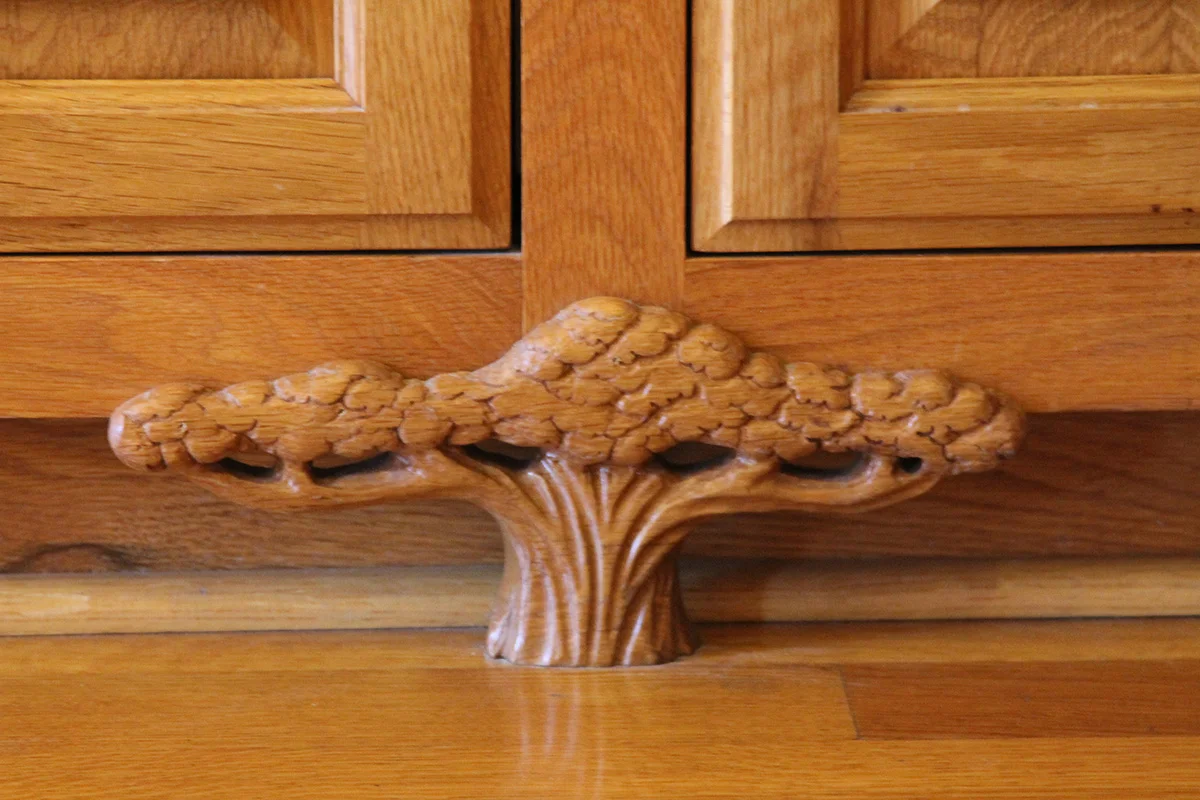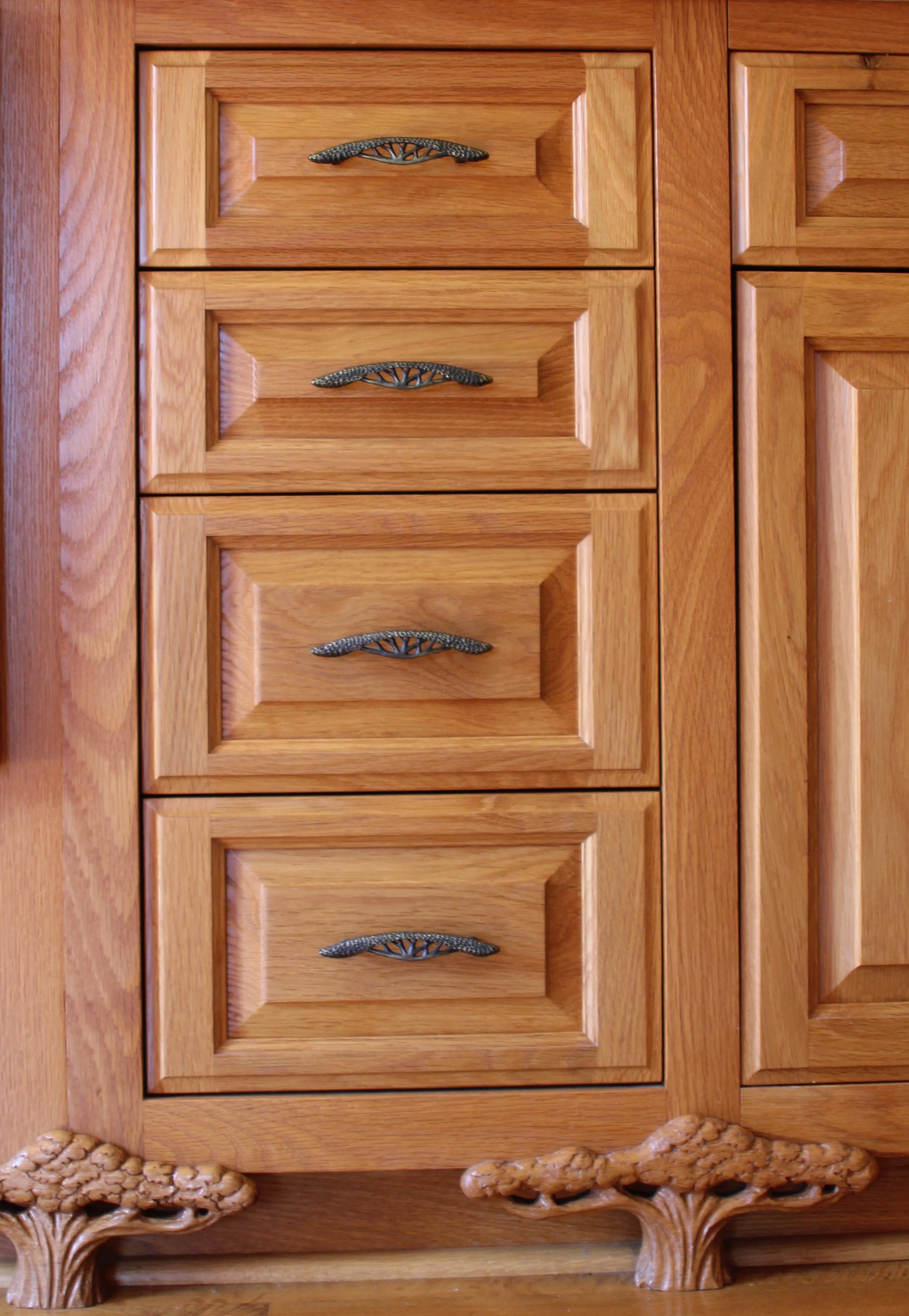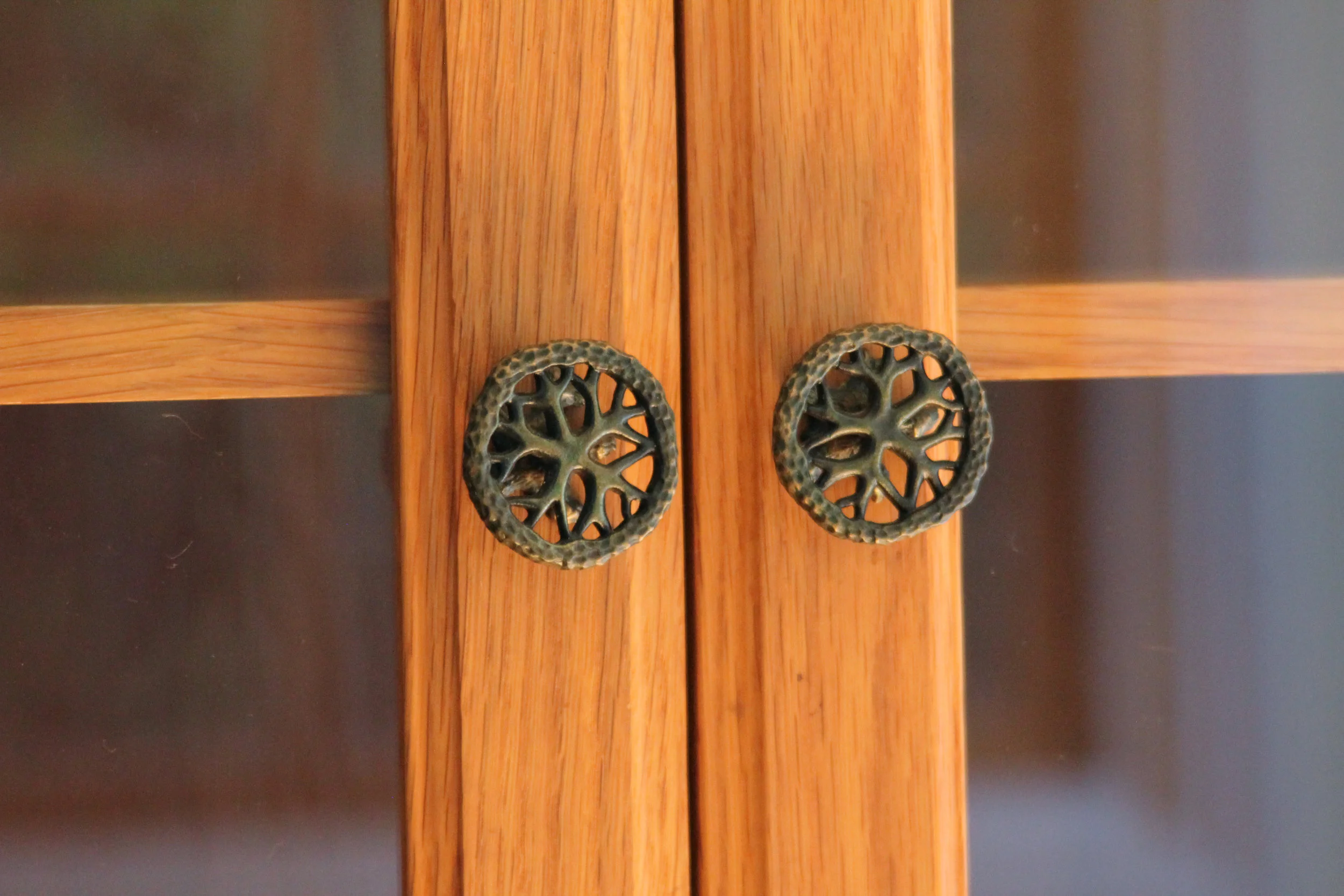When we decided to remodel our 1926 kitchen we were able to tap into our experience as furniture and cabinet makers which gave us access to local lumber yards, wood finishers and wood duplicating machines. As a wood carver Martin was able to create two unique tree patterns that were then reproduced by a wood duplicator to create multiple tree feet for the cabinetry.
A wood duplicator is a machine that works rather like a pantograph. Duplicators vary in terms of the number and size of multiples they can reproduce with the output ranging from 8 to 24 units. A series of routers are connected to act in unison so that multiple blocks of woods can be cut all at once and uniformly. The wood pattern that Martin carved was used as a master template and guide to be followed by the interconnected routers with each station creating one copy. Two patterns were made one for the center cabinet feet and a second right angle design for the corner legs.
The choice of hardware was key to the overall kitchen design and the tree motif is what ties the cabinets to the pulls and knobs.
The Hedgerow cabinet pull collection has a large left and right large facing tree that worked well for upper cabinets and for the glass door to the butler’s pantry. For the lower drawers the Hedgerow branch pull worked well and the small round cabinet knob was useful for the bi-folding cabinet doors as well as the smaller upper doors.
As the original red oak floor was in excellent condition we chose the same species for the cabinetry and finished the hardware with a simple oil rubbed finish.




